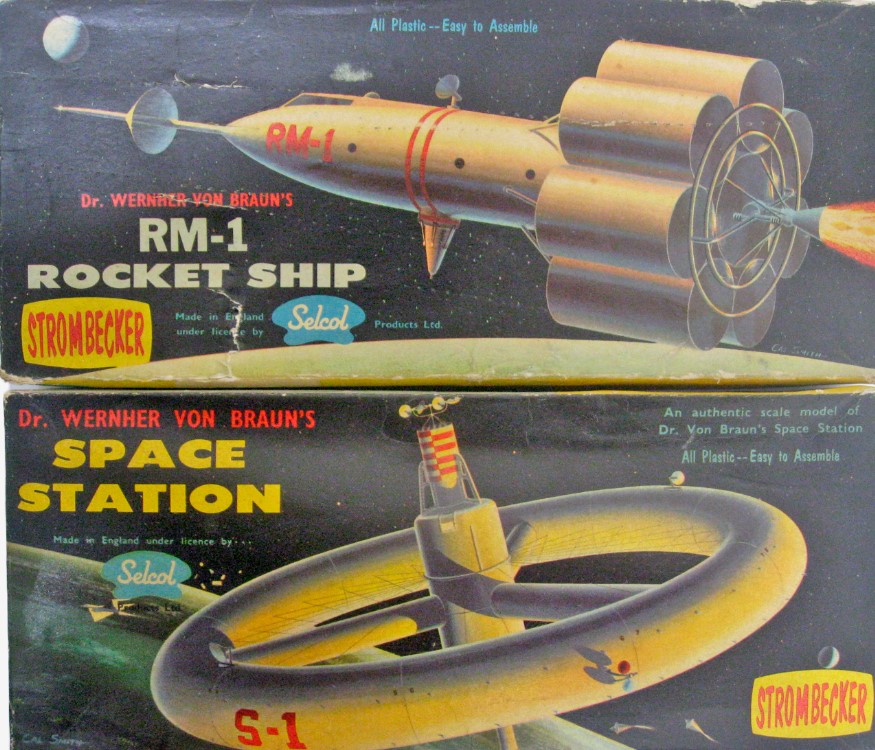13 January 2025
|
Spaceships became a staple toy once the Space Age started in 1957. Toy manufacturers capitalised on this growing interest, creating spaceship-themed toys that allowed children to imagine themselves as astronauts or interstellar adventurers.
Words By Gerald Edwards
How did Spaceships toys become so popular?
The Russian Sputnik had opened up the world to early space travel and the competition between Russia and America just fuelled it further. By this stage TV had become more commonplace so sci-fi television shows were the “future”. What had been a trickle of toys became more of a flood. Already cowboy and Indian TV shows and comics were quickly being replaced with more exotic fare and if it wasn't space then it was at least high technology spy programmes with a nod to the future. Everybody did spaceships, which captivated toy collectors at the time. A host of British companies had space toys in their ranges. Kleeware, Tudor Rose, Poplar Plastics, Merit, Tri-ang and Mettoy. Dinky toys eventually entered this realm with TV toys including Star Trek and a few more near the end of its reign and whilst Corgi never really embraced space toys apart from the missile series its TV-related offerings became a favorite amongst toy collectors.
Suggested article: Volvo’s top vintage models are what every toy collector needs

Plastic kits of spaceships abound too. All the big makers were represented. Initially, it was just the American ones like Aurora, Revel,l and Monogram. All these companies had arrangements with famous rocket scientists of the time to promote their wares and have the stamp of approval. The UK came on the scene much later via Airfix which produced Gerry Anderson kits and more factual ones like the Apollo Moon Lander and the massive Saturn V rocket.
How to Futureproof Your Toy Collection
The beauty of space and science fiction toys is that these still, even now, represent the future. When cars, buses and possibly even boats are remote history Spaceships and related toys will still be relevant. Even robots will still be with us in some shape. This gives toy collector the opportunity to “future proof” their collection. This subject will possibly outlast even the current superhero toys though this may be a grey area. Factual toys like the early missiles will be a part of history and spaceships will be the future history. This field has the credentials to grow even bigger than it is now. The real problem is in finding many of these toys, particularly the early ones. Few were made and a lot fewer still exist.
The missile kits were not particularly popular at the time so most were only on the shelves for a year or two. Despite this these missiles were the very first introduction to cruise missile technology, still very much present today. The Strombecker set of Disney inspired spacecraft did not last long either and the British Selcol variants, issued under licence, were only available in 1959. Despite being superb models, it seems they lost out to Spitfires and Hurricanes. Similarly, the Corgi range of Space Age models only lasted two years, from 1958 to 1959. These have survived better because they were die-cast. For collectors finding the products of the much smaller British plastics companies can prove to be a real struggle indeed but these toys are worth the search. They don't make them like that anymore! Boxes, in particular, are hard to come by and some Dan Dare toys from the early 1950s have never surfaced in the flesh. They are only known about by references in comics like the “Eagle”.
Top tips for collecting Spacecraft and Missile toys
The best era for toy collectors to collect these toys was undoubtedly the originals from the 1950s. Commercial success at the time was perhaps dented because there were no real examples to easily see. Cars and buses were all around unlike spacecraft and missiles. Space toys made up for this with wild illustrations of spaceships, robot pilots, very scary aliens and scintillating space backgrounds on their boldly colourful packages. You could not do that with a bus! Today's more sanitised boxes and multi-lingual packaging have robbed children (and toy collectors) of the sheer joy that these illustrations bestowed. Such a pity.
Toy collectors can stay up to date with all the latest collecting news by signing up for the Collectors Club of Great Britain’s newsletter.







